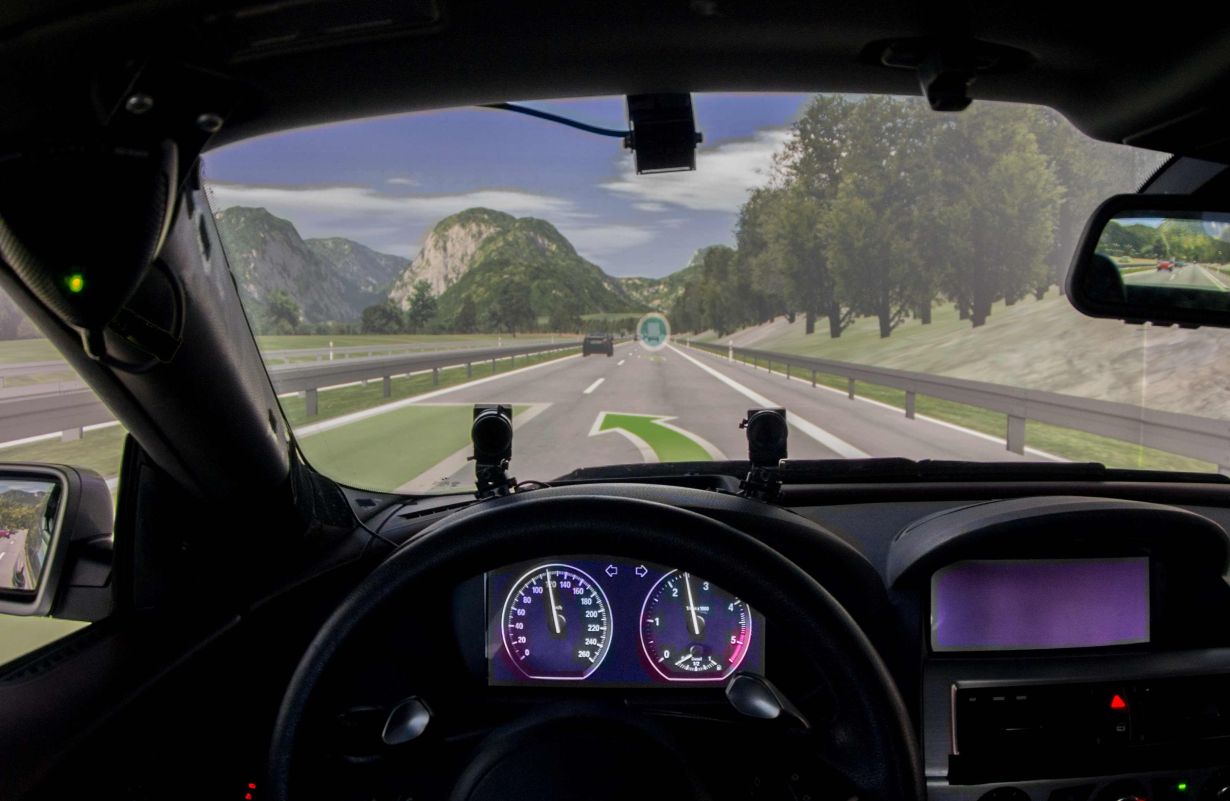Autonomous driving can enhance safety and comfort in road traffic, although there will still be situations in the medium term, in which humans will react better than the machine. Identifying such situations, passing control from the vehicle to the driver in an anticipatory and reliable way, and developing an automated vehicle that adapts to the needs of the driver were the goals of the PAKoS project coordinated by Karlsruhe Institute of Technology (KIT). After three years of development, the team presented the prototype of the human-machine interface on the test route in Bad Sobernheim.
“In future, automated vehicles will not only relieve the driver, but temporarily take over entire vehicle control,” Dr. Michael Flad, KIT, explains. He coordinates the interdisciplinary research project “Personalisierte, adaptive kooperative Systeme für automatisierte Fahrzeuge” (PAKoS, Personalized, adaptive cooperative systems for automated vehicles). It will therefore be necessary to pass vehicle control from the driver to the autonomous system and back, for instance when entering construction zones with lanes and speed limits that cannot be recognized by the system or when entering unmapped private premises. For safe transfer of control during the drive, the automated vehicle must recognize the focus of the driver’s attention and adapt accordingly. The system can use this to adjust the driving mode to the driver’s activity or to safely and comfortably transfer control.
Via cameras in the car’s interior and sensors on the steering wheel, the PAKoS system identifies the state and attention of the driver. It assesses the current performance and the requirements of the driver: Does the driver look onto the road or into a book? Does he/she speak into a mobile phone or look for something in the bag on the seat next to him/her? Then, information and instructions are exchanged multimodally between the driver and the vehicle to support joint actions, such as the transition between autonomous and manual drive. In addition, the driver can personalize the driving behavior with an app. The prototype will now be presented in Bad Sobernheim.
Cooperation between Driver and Vehicle: PAKoS Project
At KIT, three institutes contribute to PAKoS: the Institute for Control Systems (IRS) was responsible for the technical implementation of control transfer. Central issues are the modeling of haptic interaction between the driver and vehicle and optimum support of the human driver to be determined on this basis. The Institute for Anthropomatics and Robotics (IAR) deals with video-based recognition of complex activities of the driver and interactions. The goal was to develop real-time processes under real use conditions. The Institute for Technology Assessment and Systems Analysis (ITAS) coordinates and conducts technology assessment parallel to the research and development process in the project. In addition, generalized innovation-related recommendations were developed for decision-makers.
The unique selling point of the PAKoS project is the development of a holistic and consistent concept for individualized and personalized cooperation between driver and automated vehicle, which will be needed for future approval of highly automatic vehicles. Security and data protection as well as social aspects are also considered by the project. Apart from KIT and its innovation partner, the FZI Research Center for Information Technology, the Technical University of Munich, Fraunhofer Institute of Optronics, System Technology, and Image Exploitation, Robert Bosch GmbH, Bayerische Motorenwerke AG, Spiegel Institute Mannheim GmbH & Co. KG, Videmo Intelligente Videoanalyse GmbH & Co. KG, mVISE AG, and Stadtmobil CarSharing GmbH & Co. KG were involved in the project. The total project budget amounts to about EUR 4.2 million. BMBF granted funding in the amount of about EUR 3.1 million.
More information:
http://www.projekt-pakos.de (in German)
https://www.technik-zum-menschen-bringen.de/projekte/pakos (in German)
https://www.kit.edu/kit/english/pi_2017_008_mobility-optimum-interaction-between-man-and-car.php
More about the KIT Mobility Systems Center: http://www.mobilitaetssysteme.kit.edu
Being “The University in the Helmholtz Association”, KIT creates and imparts knowledge for the society and the environment. It is the objective to make significant contributions to the global challenges in the fields of energy, mobility, and information. For this, about 10,000 employees cooperate in a broad range of disciplines in natural sciences, engineering sciences, economics, and the humanities and social sciences. KIT prepares its 22,800 students for responsible tasks in society, industry, and science by offering research-based study programs. Innovation efforts at KIT build a bridge between important scientific findings and their application for the benefit of society, economic prosperity, and the preservation of our natural basis of life. KIT is one of the German universities of excellence.

